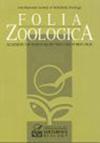The significance of major roads as barriers and their roadside habitats as potential corridors for hazel dormouse migration – a population genetic study
Q2 Agricultural and Biological Sciences
引用次数: 3
Abstract
Abstract. Major roads are commonly regarded as migration barriers for most terrestrial animal species. Hazel dormouse, Muscardinus avellanarius, populations in south-eastern Schleswig-Holstein were investigated in order to assess the possible effects of major roads on their genetic variability and genetic structure. A total of 177 samples were collected and analysed, using ten microsatellite loci. Estimates of genetic diversity (expected heterozygosity: 0.48-0.65, allelic richness: 2.9-3.9) were within the range commonly found in this species. No evidence of inbreeding or past bottlenecks was detected. The software structure grouped the samples into five subpopulations. However, this subdivision should be treated with caution, since many individuals with mixed or unclear genetic profiles were found, possibly representing migrants or their offspring. Contrary to the previous assumption that dormice hardly ever cross roads, the present study shows that dormice not only cross even major roads, but also hold close relationships to individuals living on the other side of the motorway. The high number of animals captured within a small area and the relatively low genetic differentiation (FST: 0.142 and 0.105) despite the great distances (33.1 and 25.6 km) along the road, indicate that the roadside shrubs can actually be good habitats for dormice and provide suitable corridors for migration.主要道路作为屏障的重要性及其路边栖息地作为榛睡鼠迁徙的潜在走廊——一项种群遗传研究
摘要主要道路通常被认为是大多数陆生动物的迁徙障碍。以石勒苏益格-荷尔斯泰因州东南部的榛睡鼠、avellanarius Muscardinus为研究对象,探讨了主要道路对榛睡鼠遗传变异和遗传结构的影响。利用10个微卫星位点,共收集和分析了177个样本。遗传多样性(期望杂合度:0.48 ~ 0.65,等位基因丰富度:2.9 ~ 3.9)在该物种常见的范围内。没有发现近亲繁殖或过去瓶颈的证据。软件结构将样本分为五个亚群。然而,这种细分应该谨慎对待,因为发现了许多混合或不清楚遗传谱的个体,可能代表移民或他们的后代。与之前认为睡鼠几乎从不过马路的假设相反,目前的研究表明,睡鼠不仅会穿过主要道路,而且还会与住在高速公路另一边的个体保持密切的关系。在小范围内捕获的动物数量较多,而遗传分化相对较低(FST分别为0.142和0.105),但距离较远(33.1 km和25.6 km),表明路边灌木实际上可以成为睡鼠的良好栖息地和适宜的迁徙通道。
本文章由计算机程序翻译,如有差异,请以英文原文为准。
求助全文
约1分钟内获得全文
求助全文
来源期刊

Folia Zoologica
生物-动物学
CiteScore
1.70
自引率
0.00%
发文量
0
审稿时长
3 months
期刊介绍:
Information not localized
 求助内容:
求助内容: 应助结果提醒方式:
应助结果提醒方式:


